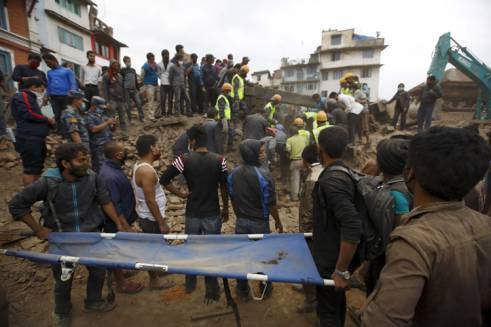By Sarah Marzouk
On Saturday 25 April, a 7.8 magnitude earthquake struck Nepal between Kathmandu and Pokhara.
A strong aftershock on Sunday caused further panic and frustrated efforts to reach survivors.
Death toll rising rapidly
Around 4,000 have died and several thousand more are injured. These numbers are likely to rise as rubble is cleared and as news comes in from remote and cut-off areas.
Damaged homes and aftershocks mean that thousands of people are sleeping outside on the streets.
Limited access to affected areas is expected to hamper search and rescue efforts. Clearing the debris could take weeks.
Hospitals are overwhelmed and people are being treated on the streets. 6 million people are estimated to have been affected by the earthquake. Of the people affected, around 500,000 are likely to be older people, as approximately 8.1% of the population is over 60.
What we’re doing
We have an existing programme in Nepal and well-established local partners in the affected areas.
Our initial focus will be on addressing the immediate needs of survivors including emergency shelter; food; drinking water; and household items.
How older people are affected
There is strong evidence that older people suffer disproportionately from disasters. Nepal ranks at number 30 in HelpAge’s Disaster Risk and Age Index, which assesses the the disaster risk faced by older people in 190 countries.
“Older people bear the initial brunt of disasters often because they cannot flee,” said HelpAge International’s Chief Executive, Toby Porter.
“This is compounded by their vulnerability to injury and the devastating impact of being without shelter and food. The mental fall-out from disasters is also huge. Older women and men are ready to help others but are often too proud to help themselves.”
What you can do:
To support older people affected by the Nepal earthquake:
